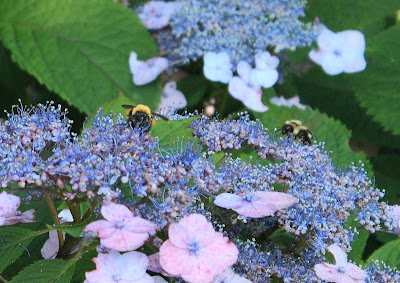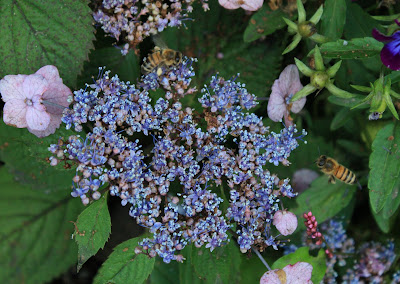For all you haters who think NYC is a dirty, crowded, concrete jungle, meet northern Manhattan. During a long walk through Ft. Tryon, along the Hudson to the northern tip of the island, we discovered this magical oasis called Inwood Hill Park. Every single photograph depicts Manhattan proper.
Here, we have a common Hobbit Hole, certainly home to some sort of wild creature. I contemplated a more intimate exploration before remembering that certain creatures (like groundhogs) can be surprisingly menacing when they suddenly emerge from hiding, as if they were watching you all along.

In this photograph, Frank expresses amused annoyance at his prominence in my photo montage. Note the giant rocks and lush greenery.

Lions and tigers and bears, OH MY! Some parts of this trail were downright creepy! I half-expected to be pelted with apples by the sinister-looking trees themselves!


Lions and tigers and bears, OH MY! Some parts of this trail were downright creepy! I half-expected to be pelted with apples by the sinister-looking trees themselves!

Abandoned fire hydrant, covered in rusted graffiti, alludes to times of yore when drug dealers and hobos ruled this pristine area. If I were an 80's crack dealer, I'd find Inwood Hill Park quite agreeable in terms of stealth and tranquility.





A felled giant in the woods makes Frank's rugby physique look quite dainty! Can you spot The Frank??

Possibly the most exciting find of the afternoon: a fire pit complete with seating area and scenery comparable to that of the rocky Catskills. A rock shaped exactly like a rabbit refused to be photographed clearly, suggesting supernatural powers and/or rock electromagnetism. Stay tuned for summer party invite.


Ah, finally a reminder that we are, in fact, in the greatest city in the world:

The lack of strangers in these photographs is no coincidence: we spent hours exploring the hilly terrain without encountering a single human bean. Or being. All you Brooklyn folks: take the A Train to 190th and wander in a northeasterly fashion. I mean it!
We made it to the tail end of the Inwood Farmers' Market, just in time to get some local wildflower honey, (light, slightly tart,) buckwheat honey, (dark, slightly bitter,) plus a bunch of apples. While I collapsed into a well-deserved nap at home, Baker Frank whipped up a delightful apple crisp using the freshest of ingredients. I ate half before realizing I should photograph it... Below are Frank's (vague) directions. I highly recommend picking up some buckwheat honey from your local farmer's market and making this decadent treat for someone you love:
Frank's Fantastic Buckwheat Honey Apple Crisp
Skin and core a bunch of apples. Use about 8 different types of apples of varying size.
Soften apples with heat and butter until they are warm. Use a whole stick of butter.
Mush them with potato masher.
Add spices to taste, like cinnamon and allspice.
Add buckwheat honey to taste.
Throw contents into something that you would cook a crisp with.
Crisp part:
1 stick of butter
1/2 cup brown sugar
3/4 cups oats
Slowly add up to a cup of flour, until there is cohesion. "Crumbly and no longer wet."
Sprinkle over mushed apples to cover them completely.
Bake at 350 until until "crisp" forms. (Approx. 30-35 min.)
Let cool and enjoy!


















































